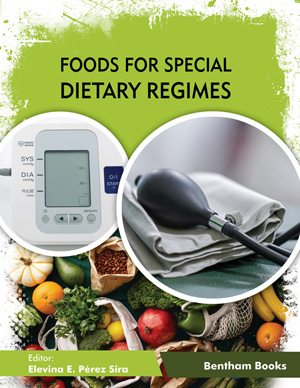
Abstract
Background: Maternal nutritional factors play a significant role in maternal glucose and fatty acid transfer across the placenta and contribute to further enhancing fetal growth and also increasing the risk of fetal macrosomia.
Objective: This review aims to provide the effects of placental transfer of maternal fatty acids and glucose on fetal macrosomia, and also highlights the maternal nutritional interventions to prevent fetal adiposity.
Methods: All abstracts and full-text articles have been examined and the most relevant articles have been included in this review.
Results: Maternal obesity, maternal over-nutrition, and gestational diabetes can permanently influence the risk of macrosomia via the effects of the placental transfer of maternal fatty acids and glucose on the fetus. These conditions are associated with unfavorable maternal environments that lead to fetal growth acceleration by adverse fetal programming outcomes and increased risk of childhood obesity. As a result, pregnancy should be viewed as a window of opportunity for the development of maternal nutritional therapies that improve maternal glucose and lipid metabolism, potentially reducing macrosomia and juvenile obesity.
Conclusion: Evidence-based techniques for managing maternal glucose and fatty acid transfer to the fetus include maintaining maternal pre-pregnancy body mass index (BMI), acceptable weight gain throughout pregnancy, and maternal nutritional interventions during pregnancy. Healthy dietary patterns (such as the Mediterranean diet) and/or dietary consumption of certain nutrients (such as omega-3 fatty acids) are among the suggestions for fetal macrosomia prevention.
Keywords: Childhood obesity, fetal macrosomia, maternal glucose, maternal fatty acids, maternal nutrition, nutritional interventions.
[http://dx.doi.org/10.1186/s12887-019-1541-4] [PMID: 31179916]
[http://dx.doi.org/10.2174/1389202920666191030092225] [PMID: 32476999]
[http://dx.doi.org/10.1007/s10995-007-0276-2] [PMID: 17713848]
[http://dx.doi.org/10.1159/000371628] [PMID: 26045324]
[http://dx.doi.org/10.1016/j.reprotox.2011.05.002] [PMID: 21620955]
[http://dx.doi.org/10.1016/j.mehy.2018.10.022] [PMID: 30593430]
[http://dx.doi.org/10.1530/acta.0.0160330] [PMID: 13206643]
[http://dx.doi.org/10.1002/oby.20576] [PMID: 23853155]
[http://dx.doi.org/10.1016/j.clinthera.2018.08.007] [PMID: 30236792]
[http://dx.doi.org/10.1016/j.ogrm.2020.02.011]
[http://dx.doi.org/10.1016/j.midw.2016.06.016] [PMID: 27474932]
[http://dx.doi.org/10.1067/mob.2003.302] [PMID: 12748514]
[http://dx.doi.org/10.1016/S0301-2115(03)00154-4] [PMID: 14557004]
[http://dx.doi.org/10.1007/s12519-018-0218-7] [PMID: 30635839]
[http://dx.doi.org/10.1038/ijo.2009.131] [PMID: 19564880]
[http://dx.doi.org/10.1016/j.ijgo.2004.08.010] [PMID: 15548393]
[http://dx.doi.org/10.1016/j.coemr.2020.07.005]
[http://dx.doi.org/10.3945/ajcn.110.000927] [PMID: 22049164]
[http://dx.doi.org/10.1038/ijo.2015.13] [PMID: 25640766]
[http://dx.doi.org/10.1161/CIRCULATIONAHA.111.047738] [PMID: 23027812]
[PMID: 29029897]
[http://dx.doi.org/10.1001/jama.2016.6361] [PMID: 27272581]
[http://dx.doi.org/10.1016/j.physbeh.2020.112964] [PMID: 32479804]
[PMID: 30987690]
[http://dx.doi.org/10.1016/j.obmed.2019.100112]
[http://dx.doi.org/10.1016/j.puhe.2014.12.004] [PMID: 25746156]
[http://dx.doi.org/10.1016/j.amepre.2015.11.012] [PMID: 26916261]
[http://dx.doi.org/10.1016/j.psyneuen.2020.104659] [PMID: 32240906]
[http://dx.doi.org/10.1016/j.mce.2016.07.002] [PMID: 27392495]
[http://dx.doi.org/10.1038/ijo.2015.178] [PMID: 26367335]
[http://dx.doi.org/10.1016/j.beem.2012.03.008] [PMID: 22980046]
[http://dx.doi.org/10.5468/ogs.2017.60.6.506] [PMID: 29184858]
[http://dx.doi.org/10.1146/annurev-physiol-020911-153245] [PMID: 21910625]
[http://dx.doi.org/10.1159/000456668] [PMID: 28384625]
[http://dx.doi.org/10.1210/en.2016-1003] [PMID: 26859334]
[http://dx.doi.org/10.1042/BJ20091861] [PMID: 20388123]
[http://dx.doi.org/10.1016/j.earlhumdev.2006.07.001] [PMID: 16876341]
[http://dx.doi.org/10.1016/S0140-6736(86)91340-1] [PMID: 2871345]
[http://dx.doi.org/10.1016/j.puhe.2011.11.014] [PMID: 22325676]
[http://dx.doi.org/10.1007/BF00400248] [PMID: 1644236]
[http://dx.doi.org/10.1093/ije/dyt133] [PMID: 24159065]
[http://dx.doi.org/10.1111/cen.12055] [PMID: 23009645]
[http://dx.doi.org/10.1586/eem.09.45] [PMID: 30780787]
[http://dx.doi.org/10.1101/cshperspect.a026591] [PMID: 26337113]
[http://dx.doi.org/10.1210/en.2008-1106] [PMID: 18936494]
[http://dx.doi.org/10.1371/journal.pone.0047776] [PMID: 23082214]
[http://dx.doi.org/10.3390/nu7115467] [PMID: 26593940]
[http://dx.doi.org/10.1007/s00404-019-05400-9] [PMID: 31811414]
[http://dx.doi.org/10.1007/s10995-013-1253-6] [PMID: 23784612]
[http://dx.doi.org/10.1111/j.1467-789X.2011.00867.x] [PMID: 21438992]
[http://dx.doi.org/10.1371/journal.pone.0061627] [PMID: 23613888]
[http://dx.doi.org/10.2337/dc08-0039] [PMID: 18606978]
[http://dx.doi.org/10.1155/2014/640291] [PMID: 25544943]
[http://dx.doi.org/10.1371/journal.pmed.1002744] [PMID: 30742624]
[http://dx.doi.org/10.1007/s00404-014-3545-5] [PMID: 25388922]
[http://dx.doi.org/10.1053/plac.2002.0773] [PMID: 11978056]
[http://dx.doi.org/10.1016/0002-9378(91)90637-7] [PMID: 1986596]
[http://dx.doi.org/10.3109/14767050903121472] [PMID: 19626569]
[http://dx.doi.org/10.4239/wjd.v8.i12.489] [PMID: 29290922]
[http://dx.doi.org/10.2337/dc08-1111] [PMID: 18697902]
[http://dx.doi.org/10.1016/S0301-2115(01)00575-9] [PMID: 12039087]
[http://dx.doi.org/10.1016/j.tem.2013.05.006] [PMID: 23791137]
[http://dx.doi.org/10.1007/s00125-012-2505-5] [PMID: 22402988]
[http://dx.doi.org/10.1055/s-0031-1275517] [PMID: 21710399]
[http://dx.doi.org/10.4239/wjd.v2.i11.196] [PMID: 22087356]
[http://dx.doi.org/10.2337/dc06-2559a] [PMID: 17416786]
[http://dx.doi.org/10.1111/1471-0528.14042] [PMID: 27102226]
[PMID: 16612115]
[http://dx.doi.org/10.1146/annurev.nutr.012809.104742] [PMID: 20438366]
[http://dx.doi.org/10.1016/B978-0-12-387042-1.00007-1] [PMID: 22126027]
[http://dx.doi.org/10.3109/00016341003605677] [PMID: 20423280]
[http://dx.doi.org/10.1016/j.pedneo.2013.05.006] [PMID: 23911877]
[http://dx.doi.org/10.1016/j.pedneo.2018.01.008] [PMID: 29398554]
[http://dx.doi.org/10.1152/ajpregu.00310.2010] [PMID: 20631295]
[http://dx.doi.org/10.1172/JCI32661] [PMID: 19147984]
[http://dx.doi.org/10.2174/187153011796429835] [PMID: 21831032]
[http://dx.doi.org/10.1016/j.beem.2012.03.010] [PMID: 22980045]
[http://dx.doi.org/10.1007/s10995-011-0741-9] [PMID: 21258962]
[http://dx.doi.org/10.1016/j.jand.2012.03.031] [PMID: 22889630]
[http://dx.doi.org/10.1096/fj.05-5241fje] [PMID: 16684802]
[http://dx.doi.org/10.3945/ajcn.2009.28623] [PMID: 20053880]
[http://dx.doi.org/10.1093/aje/kwk030] [PMID: 17158475]
[http://dx.doi.org/10.3945/jn.109.112433] [PMID: 20107150]
[http://dx.doi.org/10.1016/j.yfrne.2019.100773] [PMID: 31344387]
[http://dx.doi.org/10.7554/eLife.40970] [PMID: 30694175]
[http://dx.doi.org/10.1152/ajpendo.00078.2006] [PMID: 16720630]
[PMID: 18651049]
[http://dx.doi.org/10.1016/j.physbeh.2010.04.008] [PMID: 20394764]
[http://dx.doi.org/10.1113/jphysiol.2009.174896] [PMID: 19602635]
[http://dx.doi.org/10.1161/HYPERTENSIONAHA.107.101477] [PMID: 18086952]
[http://dx.doi.org/10.1038/s41366-018-0094-1] [PMID: 29777232]
[http://dx.doi.org/10.1210/en.2008-0582] [PMID: 18635655]
[http://dx.doi.org/10.3389/fgene.2011.00027] [PMID: 22303323]
[http://dx.doi.org/10.1111/j.1365-2826.2006.01505.x] [PMID: 17184487]
[http://dx.doi.org/10.1111/j.1740-8709.2011.00318.x] [PMID: 21366871]
[http://dx.doi.org/10.1016/j.plefa.2020.102063] [PMID: 32058894]
[PMID: 12636950]
[http://dx.doi.org/10.1186/s41043-015-0018-9] [PMID: 26825664]
[http://dx.doi.org/10.1016/j.plefa.2020.102098] [PMID: 32380367]
[http://dx.doi.org/10.3945/ajcn.111.026294] [PMID: 22218158]
[http://dx.doi.org/10.1016/j.nut.2015.12.002] [PMID: 26876000]
[http://dx.doi.org/10.1210/jc.2012-2482] [PMID: 23162098]
[http://dx.doi.org/10.1017/S0007114512001481] [PMID: 22591905]
[http://dx.doi.org/10.1016/S2213-8587(20)30161-3] [PMID: 32822601]
[http://dx.doi.org/10.1097/GRF.0b013e3182a8e0e5] [PMID: 24047934]
[http://dx.doi.org/10.1016/j.nut.2005.07.017] [PMID: 16500549]
[http://dx.doi.org/10.1016/j.dsx.2019.07.040] [PMID: 31405707]
[http://dx.doi.org/10.1111/j.1365-3016.2012.01278.x] [PMID: 22742611]
[http://dx.doi.org/10.1007/BF02898446] [PMID: 16936363]
[http://dx.doi.org/10.3945/ajcn.2009.28166] [PMID: 19955397]
[http://dx.doi.org/10.1007/s00404-017-4396-7] [PMID: 28510096]
[http://dx.doi.org/10.1136/bmjdrc-2019-000733] [PMID: 31798895]
[http://dx.doi.org/10.1016/j.ctim.2020.102551] [PMID: 33183669]
[http://dx.doi.org/10.1016/j.nut.2016.03.006] [PMID: 27189908]
[http://dx.doi.org/10.3390/nu11071549] [PMID: 31323991]
[http://dx.doi.org/10.1007/s11892-019-1208-4] [PMID: 31473839]
[http://dx.doi.org/10.1159/000509900] [PMID: 33524988]
[http://dx.doi.org/10.1016/j.diabres.2018.02.033] [PMID: 29505799]
[http://dx.doi.org/10.1016/j.cegh.2020.11.007]
[http://dx.doi.org/10.1016/j.phanu.2020.100211]
[http://dx.doi.org/10.1016/j.diabet.2016.04.009] [PMID: 27209439]
[http://dx.doi.org/10.1080/14767058.2017.1310193] [PMID: 28326881]
[http://dx.doi.org/10.1016/j.placenta.2020.04.002] [PMID: 33218579]
[http://dx.doi.org/10.1053/j.semperi.2015.05.009] [PMID: 26096078]
[http://dx.doi.org/10.1002/oby.20088] [PMID: 23784909]
[http://dx.doi.org/10.1007/s00404-013-3053-z] [PMID: 24141389]
[http://dx.doi.org/10.1111/ijpo.262] [PMID: 25267200]
[http://dx.doi.org/10.1038/jp.2014.22] [PMID: 24577434]
[http://dx.doi.org/10.1007/s10995-013-1361-3] [PMID: 24101436]
[http://dx.doi.org/10.3390/jcm9030707] [PMID: 32151008]
[http://dx.doi.org/10.1016/j.siny.2009.09.001] [PMID: 19853544]
 26
26 2
2





















